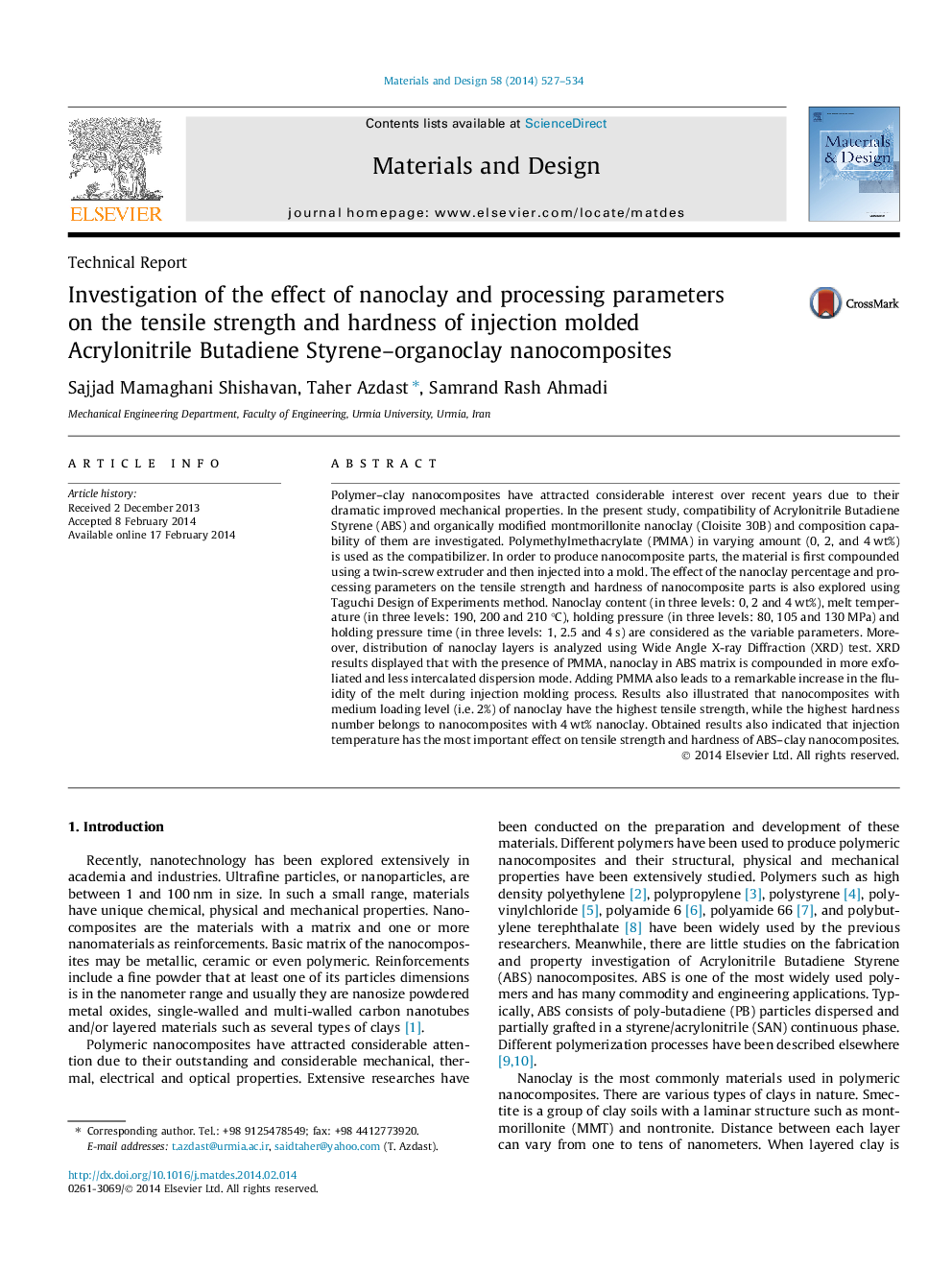| کد مقاله | کد نشریه | سال انتشار | مقاله انگلیسی | نسخه تمام متن |
|---|---|---|---|---|
| 829307 | 1470339 | 2014 | 8 صفحه PDF | دانلود رایگان |
• Development of polymer/clay nanocomposites.
• Compatibility of ABS and montmorillonite nanoclay and composition capability of them.
• Effect of nanoclay content and process parameters on the mechanical properties of nanocomposite.
• Analyzing the distribution of nanoclay layers using XRD test.
• Dependency of tensile strength and hardness to the nanoclay content and processing conditions.
Polymer–clay nanocomposites have attracted considerable interest over recent years due to their dramatic improved mechanical properties. In the present study, compatibility of Acrylonitrile Butadiene Styrene (ABS) and organically modified montmorillonite nanoclay (Cloisite 30B) and composition capability of them are investigated. Polymethylmethacrylate (PMMA) in varying amount (0, 2, and 4 wt%) is used as the compatibilizer. In order to produce nanocomposite parts, the material is first compounded using a twin-screw extruder and then injected into a mold. The effect of the nanoclay percentage and processing parameters on the tensile strength and hardness of nanocomposite parts is also explored using Taguchi Design of Experiments method. Nanoclay content (in three levels: 0, 2 and 4 wt%), melt temperature (in three levels: 190, 200 and 210 °C), holding pressure (in three levels: 80, 105 and 130 MPa) and holding pressure time (in three levels: 1, 2.5 and 4 s) are considered as the variable parameters. Moreover, distribution of nanoclay layers is analyzed using Wide Angle X-ray Diffraction (XRD) test. XRD results displayed that with the presence of PMMA, nanoclay in ABS matrix is compounded in more exfoliated and less intercalated dispersion mode. Adding PMMA also leads to a remarkable increase in the fluidity of the melt during injection molding process. Results also illustrated that nanocomposites with medium loading level (i.e. 2%) of nanoclay have the highest tensile strength, while the highest hardness number belongs to nanocomposites with 4 wt% nanoclay. Obtained results also indicated that injection temperature has the most important effect on tensile strength and hardness of ABS–clay nanocomposites.
Journal: Materials & Design - Volume 58, June 2014, Pages 527–534
